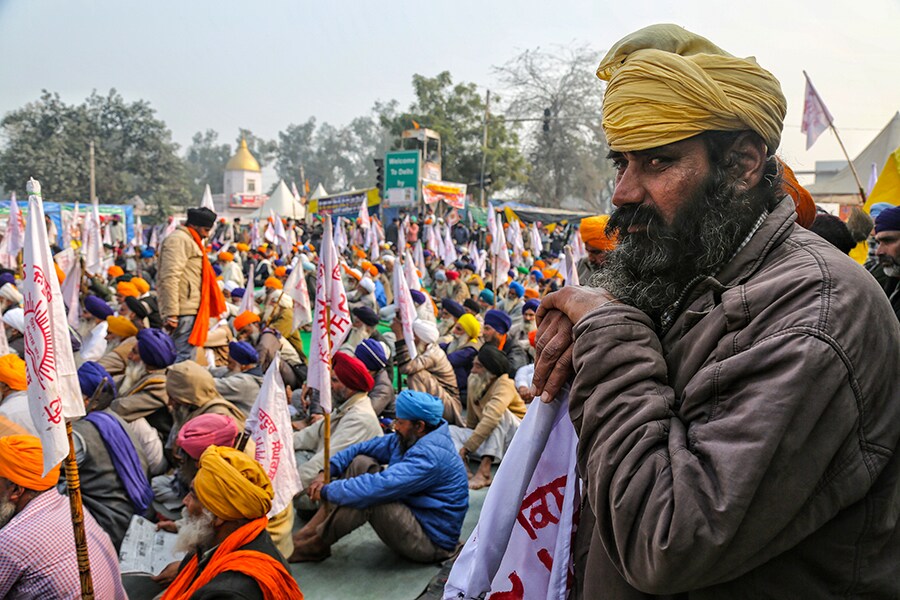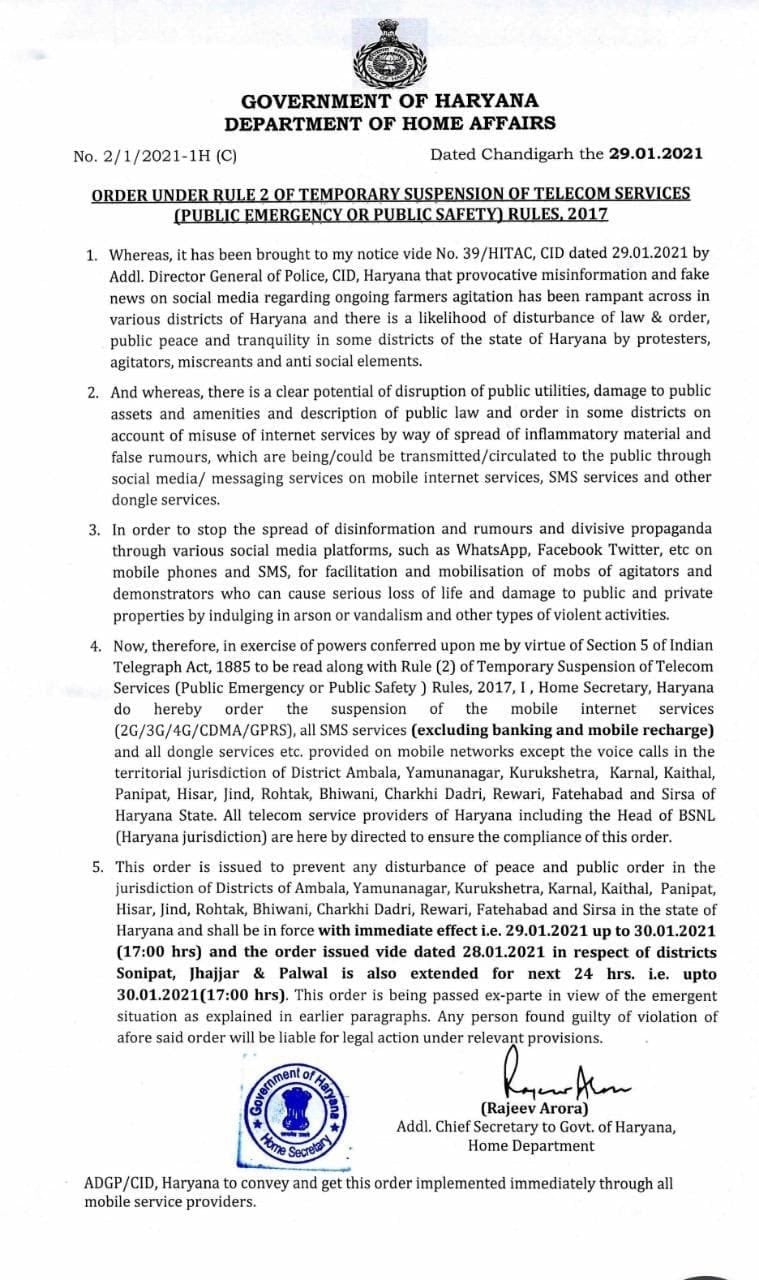
Mobile internet services suspended in most of Haryana until January 30
17 of 22 districts of the state will not have mobile internet and SMS services until 5 pm on January 30

Demonstrators with flags at Singhu Border on January 28, 2021 in New Delhi, India. (Photo by Sanchit Khanna/Hindustan Times via Getty Images)
The Haryana government has ordered telecom operators to shut down all mobile internet services, all SMS services, and all dongle services in 17 of the 22 districts of the state until 5 pm on January 30, 2020. The aim of the shutdown is to prevent protestors from mobilising through social media and to stem the flow of disinformation, in the wake of fresh tension at farmer camps between unidentified miscreants, farmers and later the police. Two national telecom operators confirmed to Forbes India that they are in the process of implementing the order.
The office of Rajeev Arora, the Additional Chief Secretary in the Home Department of Haryana, who signed the order, confirmed the authenticity of the following order to Forbes India.

Three of the districts—Jhajjar, Sonipat and Palwal—have not had mobile internet services since January 26. The remaining five districts (out of 22) where mobile internet services are still available are Gurugram, Faridabad, Nuh, Mahendragarh and Panchkula. Forbes India was able to confirm with residents of Gurugram, Faridabad and Panchkula that their mobile internet services are still functional.
According to the standards laid down in the Anuradha Bhasin judgement, internet shutdown orders have to be made public. At the time of publication, the order had not been uploaded on the website of Haryana Government’s Directorate of Information, Public Relations and Languages, or on its main website. However, the Directorate’s official Twitter handle had tweeted out a list of districts where mobile internet has been shut down, but it didn’t contain the official order.








